1. Cities Under Giant Domes
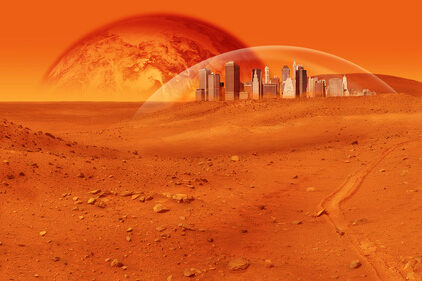
In the ’70s, some people believed that climate control would become so advanced that entire cities would be enclosed under massive domes. This idea stemmed from fears of pollution, extreme weather, and overpopulation, suggesting we’d seal urban areas to create perfect living conditions. These futuristic domes were envisioned to regulate temperature, filter out pollution, and even simulate ideal weather patterns for residents. While it sounds like something out of a science fiction novel, architects and urban planners genuinely explored these designs as a solution to growing environmental concerns. Today, domed cities remain a dream, but climate-controlled spaces like indoor parks and massive malls hint at the concept. For example, Singapore’s Gardens by the Bay showcases how controlled environments can create lush, livable spaces in urban areas.
The concept of domed cities also sparks conversations about adapting to climate change with innovative infrastructure. While the technology to enclose entire cities may not be feasible yet, advancements in green architecture and energy-efficient buildings are steps in that direction. As climate issues intensify, revisiting this idea could inspire solutions for extreme weather resilience and urban sustainability. Although we haven’t quite reached the point of living under a dome, the dream speaks to humanity’s creativity in addressing global challenges. It’s a reminder that bold ideas, even if unrealized, can shape our approach to solving pressing problems. Learn more about futuristic urban designs here.
2. Food Pills Replacing Meals

The ’70s envisioned a world where we’d no longer cook or eat traditional meals but pop nutrient-packed pills instead. The idea was rooted in efficiency—imagine a future where no one needed kitchens or dining rooms. Advocates believed this approach would eliminate hunger and save time, freeing people to focus on other pursuits. The concept gained traction in an era fascinated by space exploration, where astronauts already relied on compact, nutrient-dense food. While we now have meal replacement shakes and bars that cater to busy lifestyles, the cultural and emotional value of sitting down for a meal has kept this prediction from fully coming true. The joy of cooking, sharing meals, and celebrating food traditions is deeply ingrained in societies worldwide.
Still, modern diets reflect some aspects of this futuristic vision. Products like Soylent and Huel, designed as complete meal replacements, cater to those seeking convenience without sacrificing nutrition. These innovations show that while we haven’t abandoned traditional eating, there’s room for alternatives in our fast-paced world. However, the idea of replacing Thanksgiving dinner or a favorite comfort food with a pill seems far-fetched. Food remains a sensory and social experience, transcending its basic function as sustenance. This prediction highlights the balance between technological progress and human values. Read about the science behind meal replacements here.
3. Colonies on the Moon
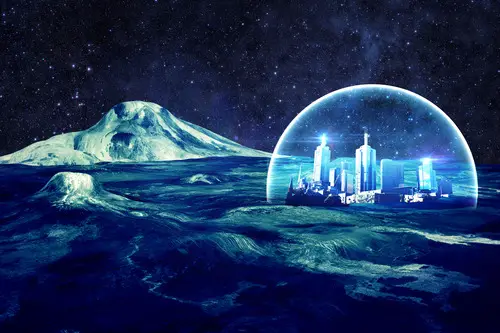
Thanks to the Apollo missions, the ’70s were buzzing with dreams of moon colonies. Experts predicted that by the 21st century, humans would live and work on the moon, mining resources and building futuristic cities. Some believed the moon would become a stepping stone for further space exploration, offering a base for missions to Mars and beyond. Visionaries imagined self-sustaining lunar communities, complete with agriculture, manufacturing, and advanced research facilities. While moon bases remain aspirational, NASA and private companies like SpaceX are reigniting the dream with plans for lunar exploration. Today, advancements in technology have brought us closer to this possibility than ever before.
However, challenges like high costs, radiation exposure, and logistical complexity continue to slow progress. Current lunar missions aim to establish a human presence, but permanent settlements are still years away. The prediction wasn’t entirely wrong—technology is catching up, but we’re just not there yet. The renewed interest in lunar exploration shows that this ’70s dream isn’t forgotten, just delayed. As space agencies and private enterprises collaborate, the idea of moon colonies might eventually become a reality. Learn about current lunar missions here.
4. Paperless Offices

Imagine walking into an office in the ’70s and hearing that by 2020, desks would be free of paper clutter, replaced entirely by computers. The rise of personal computers and early digital storage systems inspired visions of fully digitized workspaces. Experts predicted that email, word processors, and electronic filing systems would make paper obsolete. While this was partly true—email and cloud storage have minimized paper use—the “paperless” office is still a work in progress. Sticky notes, printed reports, and legal documents remain staples of many workplaces. The prediction underestimated how attached we are to tangible paperwork and the role it still plays in certain industries.
Even so, digital transformation has significantly reduced our reliance on paper. Tools like DocuSign and cloud platforms allow businesses to operate more efficiently, supporting the idea of a “mostly” paperless office. Remote work, which surged during the COVID-19 pandemic, also accelerated this shift. Yet, the tactile experience of jotting down notes or reading printed material still holds value for many people. The prediction reflects our love of convenience but highlights the challenges of changing ingrained habits. While we’re not entirely paper-free, workplaces today embody much of the spirit behind this ’70s vision.
5. Robot Housekeepers
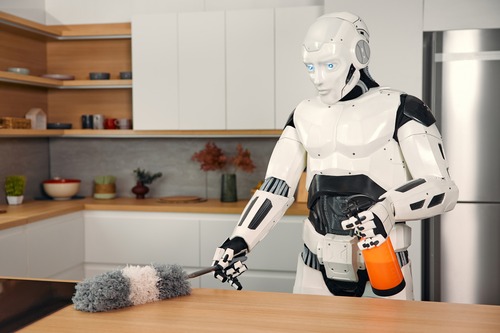
The idea of Rosie from The Jetsons coming to life was a real hope in the ’70s. People imagined robotic housekeepers would handle cleaning, cooking, and childcare by now. These robots were envisioned as humanoid helpers, capable of doing virtually any household task with precision and speed. While we don’t have such versatile machines yet, robotic vacuums like Roomba and smart home devices like Alexa bring us closer to this reality. Specialized automation has become commonplace, even if it’s far from the all-purpose robots imagined decades ago. Today’s gadgets can clean floors, order groceries, and control home lighting, showcasing incremental progress.
However, developing robots that match human adaptability remains a challenge. Artificial intelligence has advanced significantly, but creating machines capable of nuanced tasks like folding laundry or caring for children requires further breakthroughs. Despite this, the dream of robotic housekeepers continues to inspire innovation in home automation. Smart appliances and AI assistants represent the first steps toward the domestic robots of our dreams. While we’re not living in The Jetsons yet, our homes are undeniably smarter and more efficient than ever before.
6. Personal Flying Cars

The ’70s were obsessed with the idea that by the 21st century, traffic jams would be a thing of the past thanks to flying cars. People imagined zipping through the sky instead of being stuck in rush hour. The vision captured imaginations, promising to revolutionize how humans traveled. While prototypes for flying cars exist today, regulatory hurdles, safety concerns, and cost have kept them from becoming mainstream. Electric and autonomous vehicles have made more tangible progress, indicating a shift in focus. Still, the dream of soaring above traffic jams lives on in both innovation and popular culture.
The challenges of creating safe and affordable flying cars reveal the complexities of turning science fiction into reality. Engineers must overcome noise issues, fuel efficiency, and reliable navigation systems before flying cars can be practical. Furthermore, new regulations and infrastructure would be necessary to manage airborne traffic. Despite these barriers, companies like Terrafugia and AeroMobil continue to develop advanced prototypes. Perhaps future decades will finally see this prediction take off—literally. Discover the latest flying car prototypes here.
7. Telepathy Through Technology

In the ’70s, futurists envisioned devices that could transmit thoughts directly from one brain to another. This idea of telepathy through technology was both thrilling and unsettling. Imagine being able to communicate without speaking or typing—but also imagine having no secrets! While true telepathy isn’t here yet, advancements in brain-computer interfaces are getting closer to the concept. Today, researchers are developing technology that allows people to control devices with their thoughts, an impressive step forward. These tools are currently being used to help individuals with disabilities interact with their environments.
The ethical implications of thought-sharing technology raise interesting questions. How much privacy would people sacrifice for convenience? Could thoughts be hacked or manipulated? While these concerns slow development, the science behind brain-machine interfaces continues to grow. The prediction reflects humanity’s constant push to redefine communication. Though we may not achieve mind-to-mind connection anytime soon, the pursuit of such breakthroughs reveals how far technology can evolve.
8. Underwater Cities

Inspired by Jacques Cousteau and the rise of ocean exploration, the ’70s predicted humans would colonize the seas. Visionaries imagined entire cities submerged underwater, complete with homes, schools, and shopping centers. These aquatic settlements were thought to be a solution for overpopulation and dwindling land resources. While underwater hotels and research stations exist today, fully functioning aquatic cities remain a dream. Building under the ocean’s immense pressure and ensuring sustainable living conditions pose significant challenges. Even so, advancements in marine technology suggest that this idea isn’t entirely implausible.
Underwater habitats like the Aquarius Reef Base offer a glimpse of what might be possible. However, environmental concerns about disturbing marine ecosystems complicate large-scale efforts. The prediction of underwater cities highlights our fascination with exploring uncharted territories. It also underscores the importance of balancing innovation with ecological responsibility. Though this vision remains unrealized, it continues to inspire creative solutions for future living.
9. Humans Living to 150

With medical advancements booming in the ’70s, some thought the human lifespan would extend dramatically, hitting 150 years or more. This prediction was driven by breakthroughs in medicine, nutrition, and the early understanding of genetics. Visionaries believed we’d soon conquer aging and its associated diseases. While healthcare has improved life expectancy, we’re far from this lofty goal. Advances like gene editing, immunotherapy, and mRNA vaccines bring us closer to treating and even reversing age-related conditions. However, the complexities of human biology make such milestones difficult to achieve.
Ethical debates around extending life also influence this area of research. Questions about overpopulation, resource allocation, and quality of life arise when imagining a world where humans live well past 100. Despite these challenges, scientists continue to explore ways to improve longevity and healthspan. The prediction speaks to humanity’s optimism about science’s potential. While we may not live to 150 yet, each new medical discovery pushes us closer to understanding the secrets of aging.
10. Earth Powered Entirely by Solar Energy

Environmentalists in the ’70s dreamed of a future where fossil fuels were obsolete, and solar power lit up the planet. The prediction stemmed from growing awareness of climate change and a desire for cleaner energy sources. Solar technology has indeed advanced significantly since then, becoming more efficient and accessible. Countries like Germany and China lead the way in adopting solar power on a large scale. However, while renewable energy use is growing, it still hasn’t fully replaced traditional energy sources. Challenges like energy storage and infrastructure upgrades slow the transition.
The dream of a solar-powered Earth continues to inspire innovation. Technologies like solar farms, rooftop panels, and portable solar chargers reflect the progress we’ve made. Public awareness of renewable energy’s benefits has also surged, encouraging investment in green technologies. While the vision of an entirely solar-powered planet remains aspirational, it’s more achievable today than ever before. This prediction highlights humanity’s resilience and ability to adapt to global challenges.
11. Elimination of Disease

With advances in vaccines and antibiotics, the ’70s predicted the complete eradication of diseases like cancer and heart disease. Optimism ran high as researchers made breakthroughs in treating infectious and chronic illnesses. Some believed that by the 21st century, humanity would eliminate suffering from major health issues entirely. While we’ve made incredible strides in medicine, the complexity of diseases keeps this prediction out of reach. Breakthroughs in gene editing, immunotherapy, and precision medicine show promise in tackling conditions once thought incurable.
Despite progress, challenges like evolving pathogens and unequal access to healthcare persist. Diseases like cancer remain formidable foes, requiring extensive research and collaboration to combat. However, the hope of eliminating disease underscores humanity’s drive for progress and innovation. Each medical milestone brings us closer to a healthier future, even if the ultimate goal remains elusive. The prediction reflects both the ambition and limitations of scientific discovery.
12. Holographic Entertainment
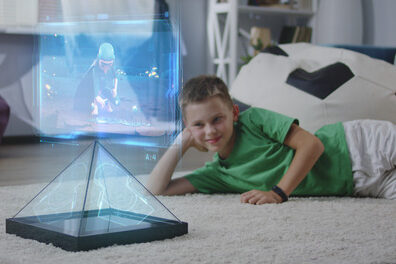
Forget screens—the ’70s imagined that by now, we’d be enjoying movies and concerts via holograms in our living rooms. This immersive form of entertainment was expected to revolutionize how we consume media. While holographic technology exists today, it hasn’t become a household norm. Events like Tupac’s holographic appearance at Coachella showcase its potential, but its high cost and technical demands limit widespread use. Streaming services and virtual reality have instead become dominant forms of entertainment, offering immersive experiences in different ways.
Holograms might still have their moment as technology improves. The idea of projecting realistic, three-dimensional visuals could transform not just entertainment but communication and education. Imagine attending a live concert in your home or interacting with a teacher’s hologram in real-time. The potential applications of this technology extend beyond leisure to fields like healthcare, where doctors could virtually attend surgeries worldwide. Although it’s not as pervasive as predicted, holography remains a futuristic concept that could change how we experience the world. As costs come down and capabilities increase, holograms might eventually achieve their ’70s dream status.
13. Weather Control on Demand
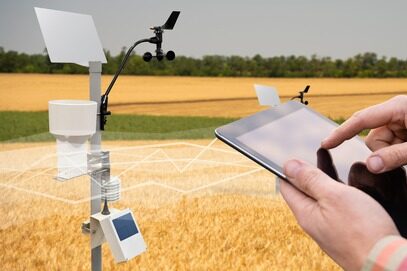
The ’70s envisioned a future where humanity could manipulate weather patterns to eliminate droughts, prevent hurricanes, and ensure perfect growing conditions for crops. This prediction was rooted in the emerging field of weather modification, which included techniques like cloud seeding. Futurists imagined governments and scientists working together to create climate utopias, transforming deserts into fertile land and redirecting storms away from populated areas. While weather control remains largely speculative, cloud seeding is used today to increase rainfall in arid regions or to prevent hail damage in agriculture. However, the scale of manipulation once predicted hasn’t come to pass, as the complexity of weather systems poses significant scientific and ethical challenges.
The potential benefits of weather control are undeniable but come with considerable risks. Altering natural systems could lead to unintended consequences, such as disrupting ecosystems or causing conflicts over resource distribution. Despite these concerns, researchers continue to explore technologies that could mitigate the effects of climate change, like geoengineering projects aimed at cooling the planet. The dream of controlling the weather reflects humanity’s desire to tame nature and protect our future. While we’re far from mastering the skies, advancements in atmospheric science show that this ’70s vision might not be entirely out of reach. Learn more about the history and ethics of weather modification here.
